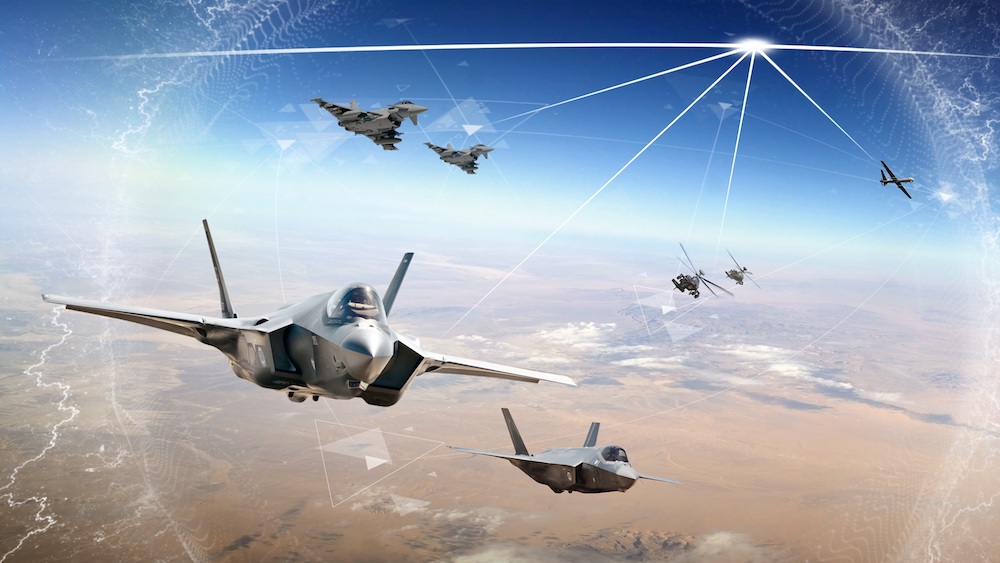BAE Systems has enhanced anti-jam (AJ) capabilities on military weapon systems and the platforms that host them, giving both the same level of protection from interference—with such protection becoming even more critical as threats from adversaries continue to increase.
This is made possible through an upgrade to the Digital GPS Anti-Jam Receiver (DIGAR) that now allows beamforming with Trimble receivers on host platforms, and a new product, the Strategic Anti-jam Beamforming Receiver – M-Code (SABR-M), that provides anti-jam protection for drones, precision-guided munitions and missiles in threat environments.
“The DIGAR goes onto launchers and the SABR is the weapon system,” said Doug Lloyd, director of weapon systems GPS at BAE Systems. “So what’s important here is you have the same level of anti-jam and GPS integrity on the host platform as you do on the weapon system. We’ve seen instances in the past where our SABR products had better AJ than the host platform. So by giving DIGAR the opportunity to enable the Trimble receiver and our AJ, now the host platform, whether it’s an aircraft or a launcher, can hot start the GPS at the same level of integrity.”
The DIGAR capability
DIGAR, a high-performance military GPS system, provides high-end anti-jam for fixed wing, rotary wing and unmanned airborne platforms, Lloyd said. It increases GPS jamming protection for aircraft by a million-fold, helping pilots execute missions in contested environments. It improves the reliability of PNT even when there are disruptive electromagnetic signals and is compatible with advanced M-Code.
BAE is leveraging its existing field proven antenna electronics, advanced signal processing and beamforming technology for the Trimble integration, putting it all into a package that makes it possible to add anti-jam onto any aircraft whether it has a Trimble receiver or one from BAE Systems.
“We modified some of our software to allow us to use the beamforming off the Trimble receiver,” Lloyd said. “So now we have beamforming. And that gives us an AJ performance of over 120 dBJ/S.”
The new SABR-M
SABR-M delivers accurate position, velocity, altitude and time data along with strong protection against signal jamming and spoofing. It offers precise geolocation and strike capabilities in highly contested battlespaces for drones, precision-guided munitions like the Joint Direct Attack Munition (JDAM) and long range missiles, including some of the hypersonics, Lloyd said.
The receiver features performance of more than 110 dBJ/S for really strong anti-jam, Lloyd said, and, like the DIGAR enhancement, also leverages the company’s beamforming technology to improve GPS signal reception and counter threat signals. It integrates receiver technology with advanced antenna electronics in a small, hardened package.
Essentially, SABR-M enables small platforms to reach their destination in challenging conditions, despite interference. It is form-compatible with previous generations of the SABR receiver.
A new facility
The team at BAE Systems is also starting the move into a new 280,000 square foot facility in Cedar Rapids, Iowa. The move combines manufacturing and engineering, once 20 miles apart, into the same building, further improving collaboration and making it easier for teams to troubleshoot problems, Lloyd said. The additional space also increases manufacturing capability for the company, allowing them to not only produce more orders and provide customers with needed GPS chip sets, but also to enable quick turnaround times for repairs and to ultimately offer better service.
Significant advancements
The new facility and the AJ enhancing products are significant advancements for BAE Systems and the customers they serve, particularly when it comes to providing enhanced anti-jam capabilities for military aircraft.
“The aircraft has to have the same level of anti-jam as the weapon,” Lloyd said. “That’s important because it’s your lowest common denominator. It allows you to fly the mission.”







